 |
||
|
||
| ||
3D graphics, game tests3D games used to estimate 3D performance:
Quake3 Arena, Quaver 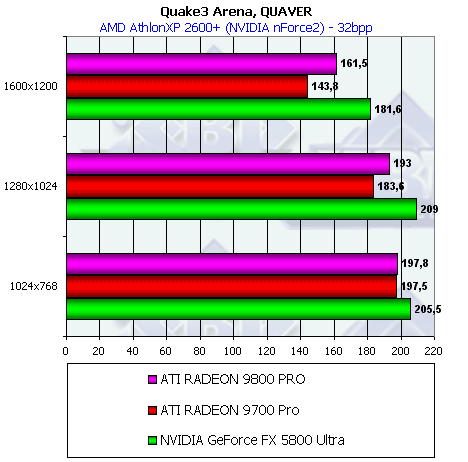     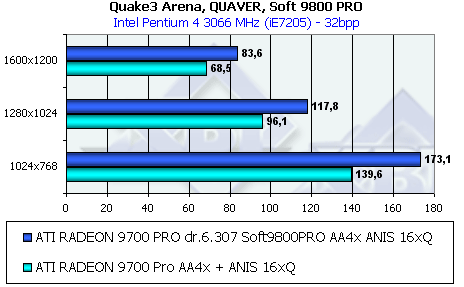 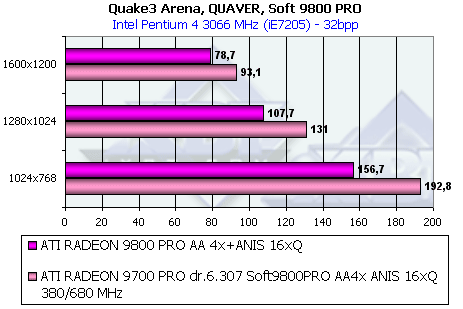  NVIDIA's optimization of the drivers for this game makes RADEON 9800 PRO lose to GeForce FX 5800 Ultra. But ATI's drivers are well optimized to RADEON 9800 PRO, which helps Soft9800 PRO outpace RADEON 9700 PRO by 25% at the equal clock speeds. Strangely, Soft9800 PRO clocked at the frequency of 9800 PRO runs faster than RADEON 9800 PRO (with AA and anisotropy). They have overdone it. This fact means that RADEON 9800 PRO is not simply a copy of 9700 working at the higher clock speeds. Serious Sam: The Second Encounter, Grand Cathedral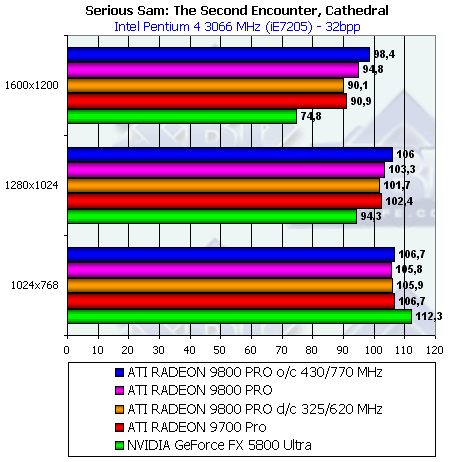  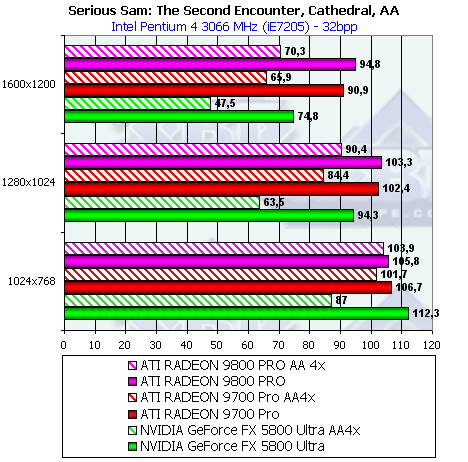 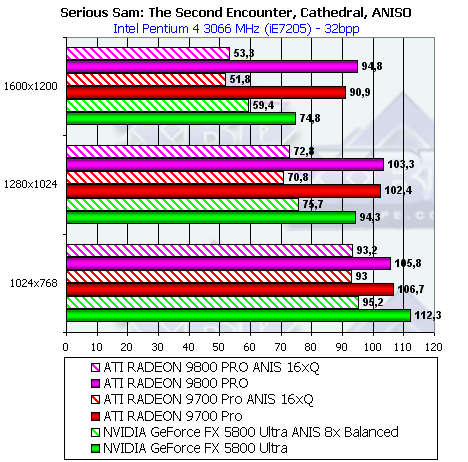 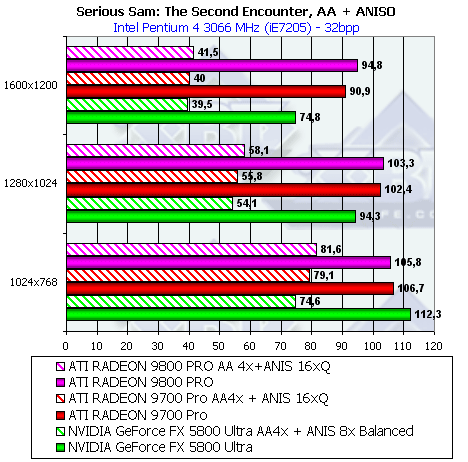   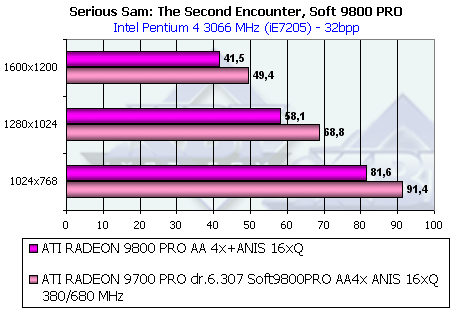  ATI likes this test more than NVIDIA does. Although RADEON 9800 PRO loses to its rival in the anisotropy mode, it wins in the heavier one with AA and anisotropy enabled. Are the drivers of RADEON 9800 PRO optimized for this game? Sure! But it can be seen only for AA and anisotropy modes. Again, Soft 9800 PRO performs better at 380/680 MHz than RADEON 9800 PRO, that is why the affirmation that RADEON 9800 PRO = RADEON 9700 PRO + increased frequencies is inconsistent. Return to Castle Wolfenstein (Multiplayer), Checkpoint 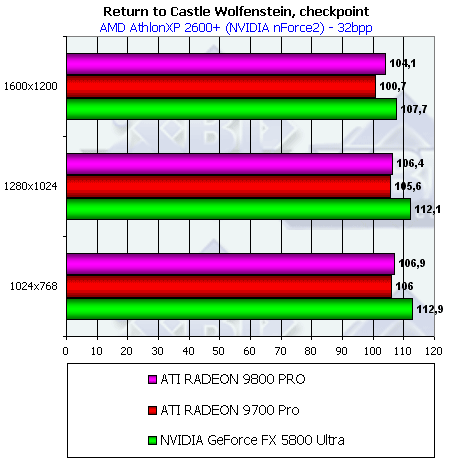   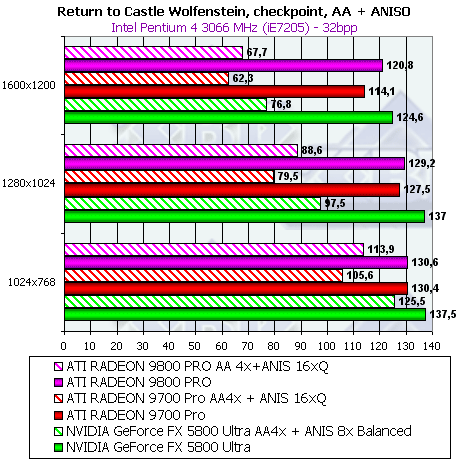  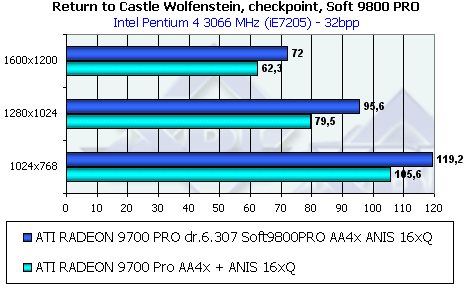 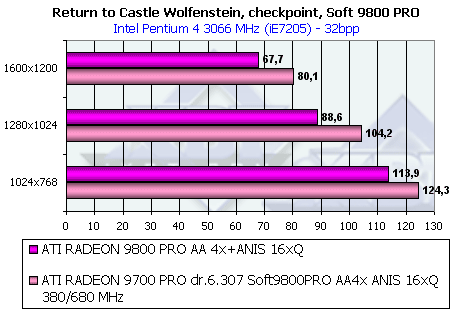  Again NVIDIA's optimization for this game? Strangely enough but RADEON 9800 PRO loses the battle again even in the heavy modes with AA and anisotropy. The drivers are optimized for 9800 but you can feel it only when AA and anisotropy are used. This test confirms that RADEON 9800 PRO is a product different from RADEON 9700 PRO. Code Creatures 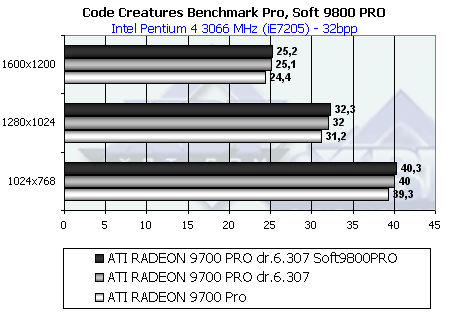  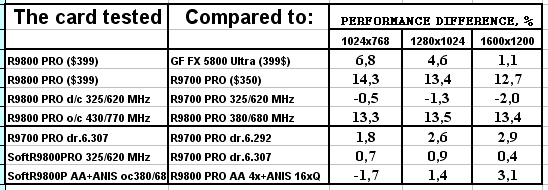 In this test the shader speed is very important. ATI's cards do not have any problems here, in contrast to NVIDIA GeForce FX 5800. That is why RADEON 9800 PRO wins. Well, if a test is not widely used, it won't be optimized for RADEON 9800 PRO. In this test the latter takes the lead exactly at the expense of its higher clock speeds and the GPU optimizations (caches, a higher shader speed etc.). Unreal Tournament 2003 DEMO 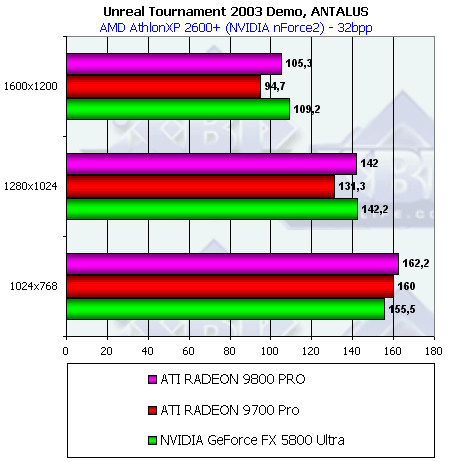 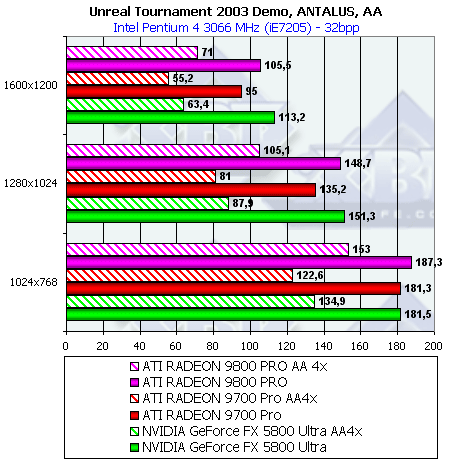 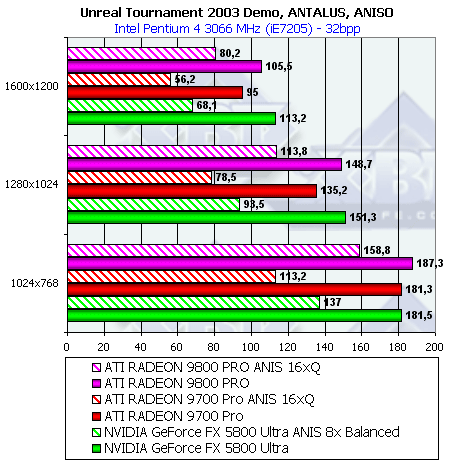 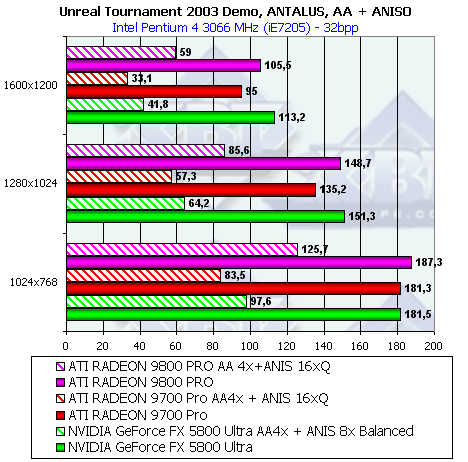     The vertex shader speed has a strong effect on this game, and RADEON 9800 PRO goes far ahead. In the heavy modes with AA and anisotropy the new-comer looks brilliant! Optimization of the drivers for 9800 is pretty good, as we can see it at the frequencies of 9700 PRO. 9700 PRO overclocked up to 9800 PRO and turned into Soft9800 PRO showed the scores in AA and anisotropy modes equal to RADEON 9800 PRO, that is why we can speak about pure optimization. AquaMark  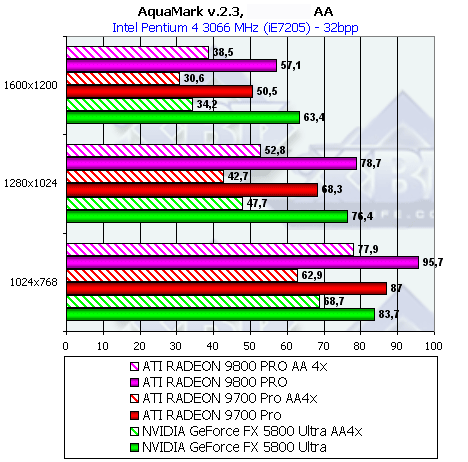  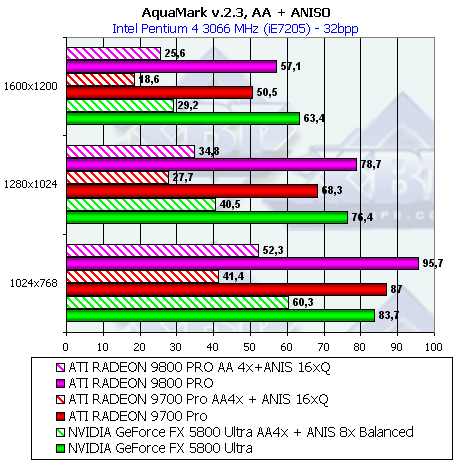   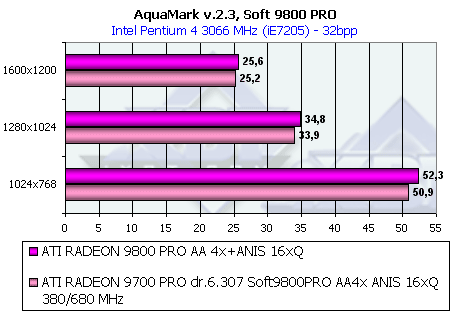 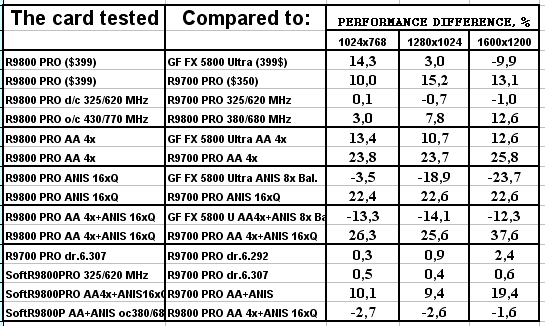 Without the extra load RADEON 9800 PRO grasps the victory (except 1600x1200), but with AA and anisotropy it loses to its competitor, though it works speedier in the AA mode. RADEON 9800 PRO has its drivers optimized for this test, but the test is not that crucial and the developers didn't do their best. RightMark 3D 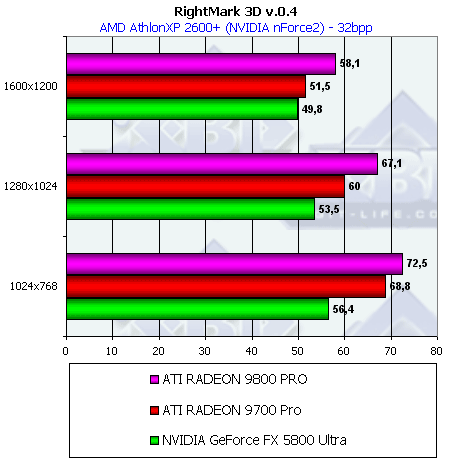 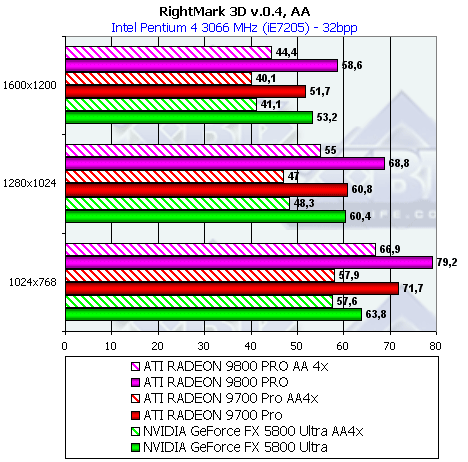 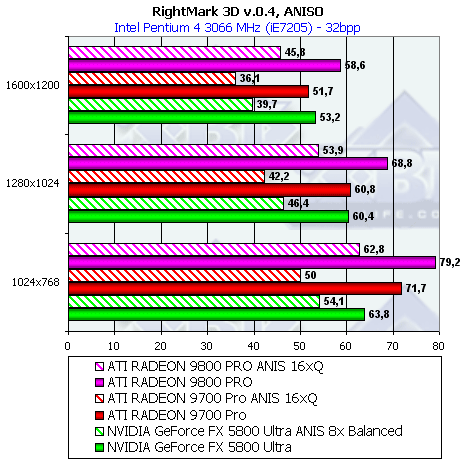 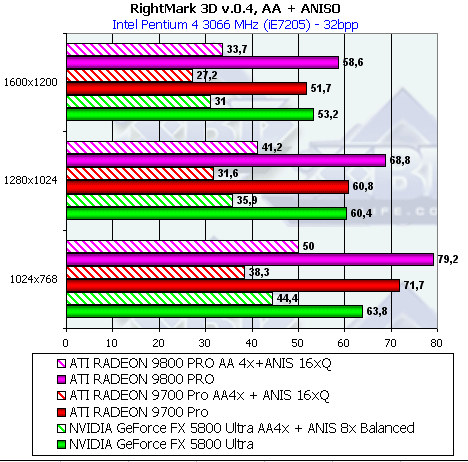 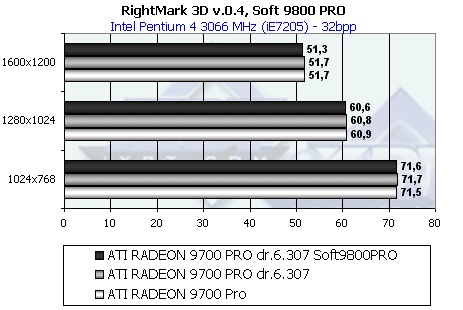 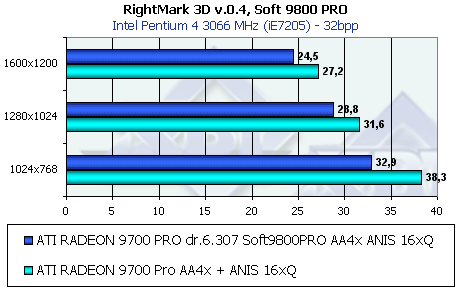 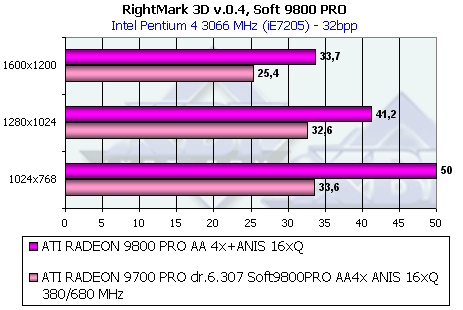 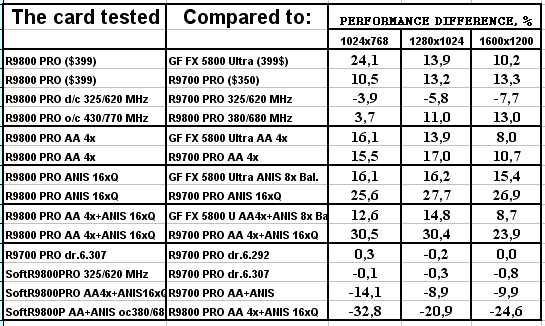 On one hand, RADEON 9800 PRO smashes NVIDIA's card because the test much depends on the shaders speed; on the other hand, this test is not open for the programmers at ATI or NVIDIA, and we can see that Soft 9800 PRO 380/680 MHz falls far behind from RADEON 9800 PRO in the heavy modes! Moreover, at 325/620 MHz it lags even behind RADEON 9700 PRO! When it comes to games or tests for which the developers can't make any optimizations, when the processor works by itself and when a given test actively uses modern technologies, RADEON 9800 PRO shows that its not simply an improved version of 9700 PRO. DOOM III Alpha   NVIDIA's drivers, as well as the more flexibly programmable NV30 help this company win. 3D Graphics QualityWe have carefully examined performance of RADEON 9800 PRO in games, in particular with AA and anisotropy enabled, and found no difference in quality from RADEON 9700 PRO. In one of our previous reviews we looked into the differences between NVIDIA and ATI regarding ATI and anisotropy, you can read about it in GeForce FX 5800 Ultra Review (theory, practice), and in GeForce FX 5600/5200 Review (practical comparison of the anisotropy). ConclusionsToday we were dealing with the fastest game graphics accelerator -- ATI RADEON 9800 PRO. So, what do we have to say about it?
Write a comment below. No registration needed!
|
Platform · Video · Multimedia · Mobile · Other || About us & Privacy policy · Twitter · Facebook Copyright © Byrds Research & Publishing, Ltd., 1997–2011. All rights reserved. |